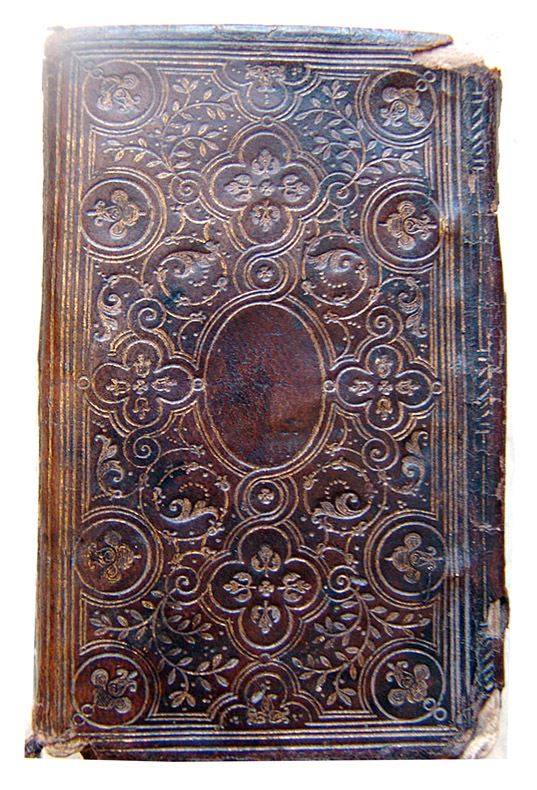

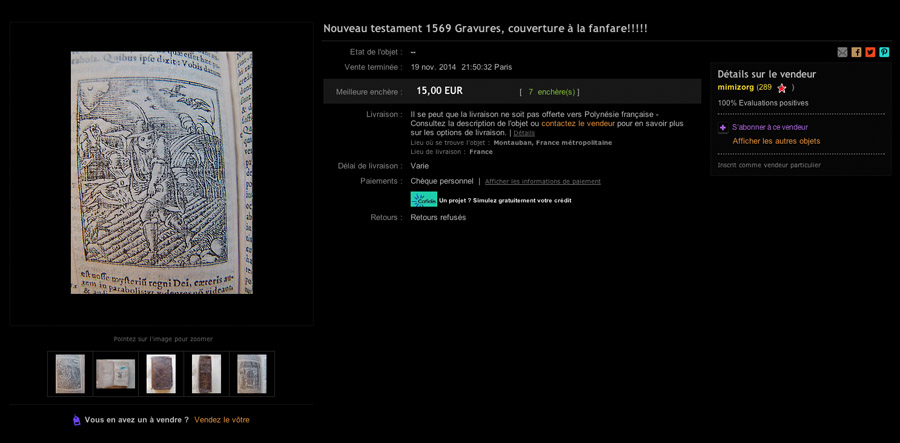
| It all started when I came across this fanfare binding on eBay. Up to this point I had avoided trying to unravel the complexities of fanfare bindings from the last quarter of the 16th century. I had bought G. D. Hobson's exhaustive and expensive book on the subject ages ago, but after looking through could not find the strength to tackle this complex work by Hobson. Now, finally I was forced to try, as I wanted to evaluate this eBay example. Hours and days later and after searching through every catalogue in my library and those online, I discovered that, out of the hundreds of fanfare bindings known to Hobson, he apparently never encountered one by this particular atelier. This is inspiring, when you discover something that has escaped the greatest experts. Here is how I discovered this. When I start looking for bindings that have been made by one particular atelier, I home in on some detail or fleuron that is likely unique to this workshop and then scour every other similar binding, keeping my identifier firmly fixed in my mind. In this case it was a bud form fleuron with a bee like shape. |
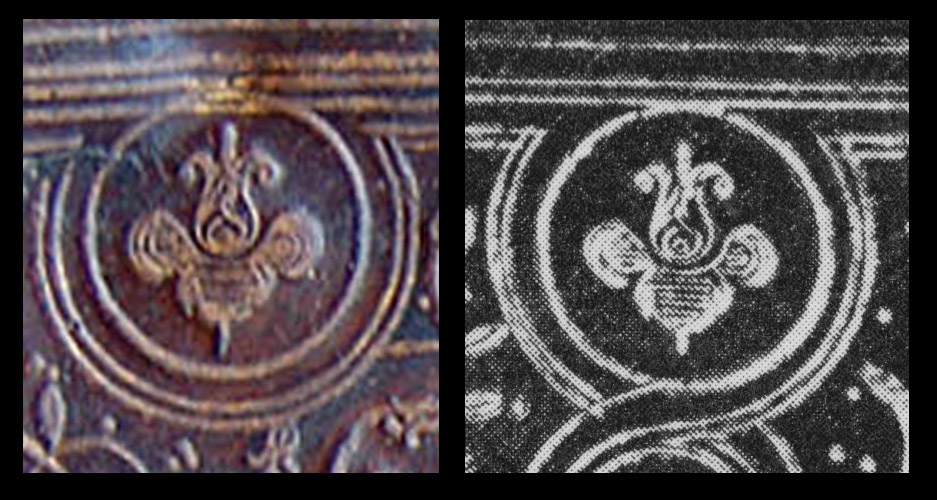
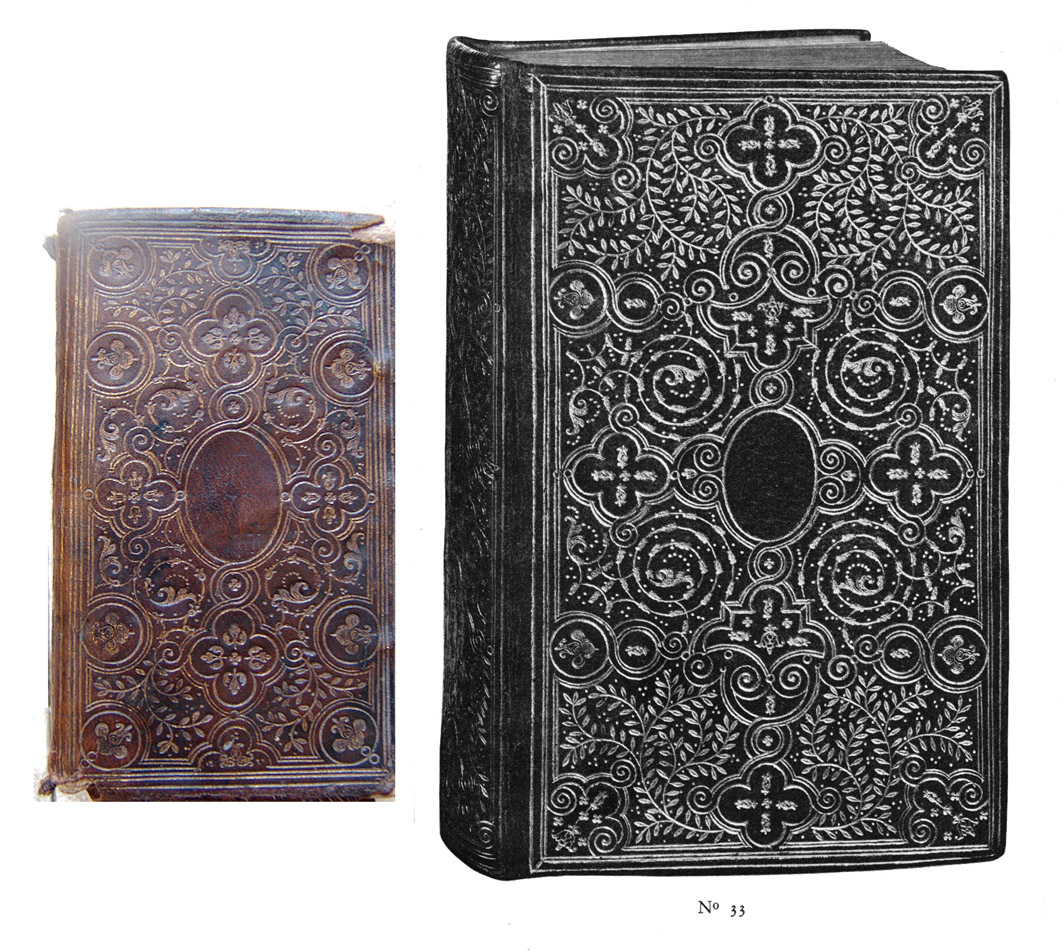
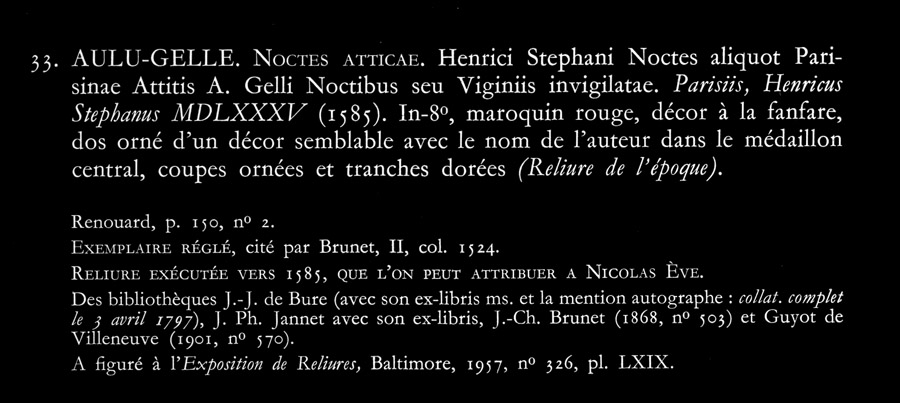
|
Actually you will see that this bud bee, shown in Compative Diagram 1, is the largest and most important decorative item on the eBay binding. After looking at dozens if not hundreds of fanfare bindings, I finally found another identical bee. It is found in Esmerian's 1972 auction catalogue, Volume 1, Item # 33, I have reproduced above, in Comparative Diagram 2 along with the catalogue information for this item, note that Esmerian has attributed this binding to Nicholas Eve. Here is where the plot thickens. This is not the only fanfare item in Esmerian's catelogue, Item 54 is another and in this case, he gives a complete review of references from H.G.Hobson's book, in reading that description you are left with the impression that Esmerian knew Hobson's work inside and out. Thus he would have also known that there was and still is a large debate on whether or not the Eve's bindery, (Nicolas and Clovis Eve) ever made a fanfare binding. Even today the experts at the Bibliothèque nationale de France do not list a single fanfare binding as being the work of Nicolas or Clovis Eve, no fanfare bindings are officially attributed to them although the BnF admit the possibility of fanfare bindings being made by Nicholas Eve: |
|
L'activité de Nicolas Ève est identifiée dès le début des années 1560 (contrat de mariage). Relieur du Roi (au moins du 18 janvier 1578 au 25 août 1581), il est surtout connu pour ses reliures à semé, notamment celles exécutées sur commandes de l'Ordre du saint-Esprit, pour lesquelles sont exceptionnellement conservés les documents comptables citant le relieur et la nature des commandes. Il a également réalisé un certain nombre de reliures à décor de petits fers, dits à la fanfare, mais cette production rest encore à préciser. A sa mort, qui intervient au cours du second semestre 1581, sa femme Noëlle Heuqueville reprend son activité, jusqu'à la majorité de leur fils, Clovis, qui prend la succession de son père au début de l'année 1584. |
|
Conversely the British Library boldly attributes, in their online Database of Bookbindings, various fanfare bindings to these two binders. Traditionally, in the not so distant past, almost every fanfare binding had been attributed to them. Now, Esmerian knowing full well this polemic, listed his item 33 fanfare binding as being attributible to Nicolas Eve! This is no small rock Esmerian is throwing into the pond and whats more this may be the only binding example from this workshop that he had ever encountered, Hobson did not find any, so who then, is going to claim he is wrong? As fate would have it, documents have surfaced since the time Esmerian penned his attrubution, to show that Nicholas Eve died in 1581 and could not have made the binding #33, we now know that after his death his wife kept the business going until her son Clovis took over in 1584, thus if it was made by the Eves, it would have been made by Clovis. I decided to triple all my searches to make sure I did not overlook one of these bindings somewhere. I went back to the British Library and checked their database once more, 88 bindings come up on a search of fanfare, and there is a little glitch that makes it easy to not see them all, not that I am complaining but when I go to the enlargements and then try to get back to my starting page I wind up shuffled off to the next page, this happened a few times so I had to triple check all the bindings and voila I finally find another! However there is no bud bee seen here, I was guided by the trident like fleuron instead. |
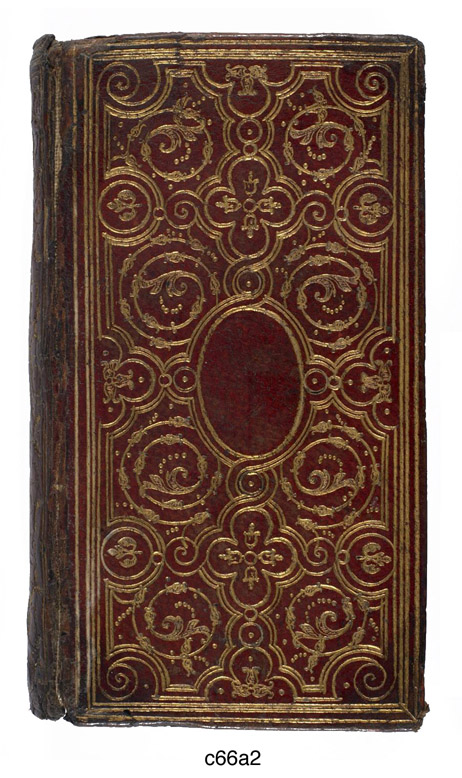
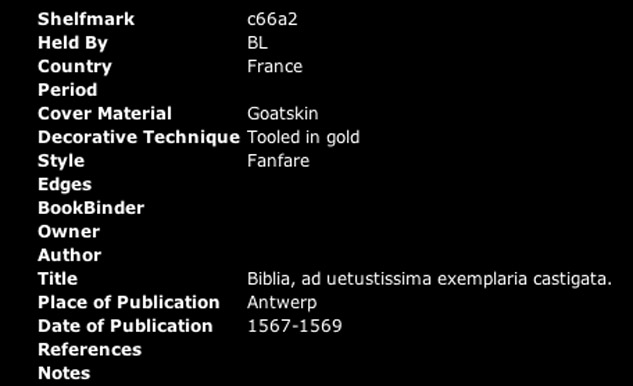
| Below in Comparative Diagram 4, I show these trident fleurons, the British Library examples are clearer, and the hatching more evident, however the eBay images are at least good enough to allow us a small amount of this detail. On the next page we will explore some of the tools found on c66a2. |
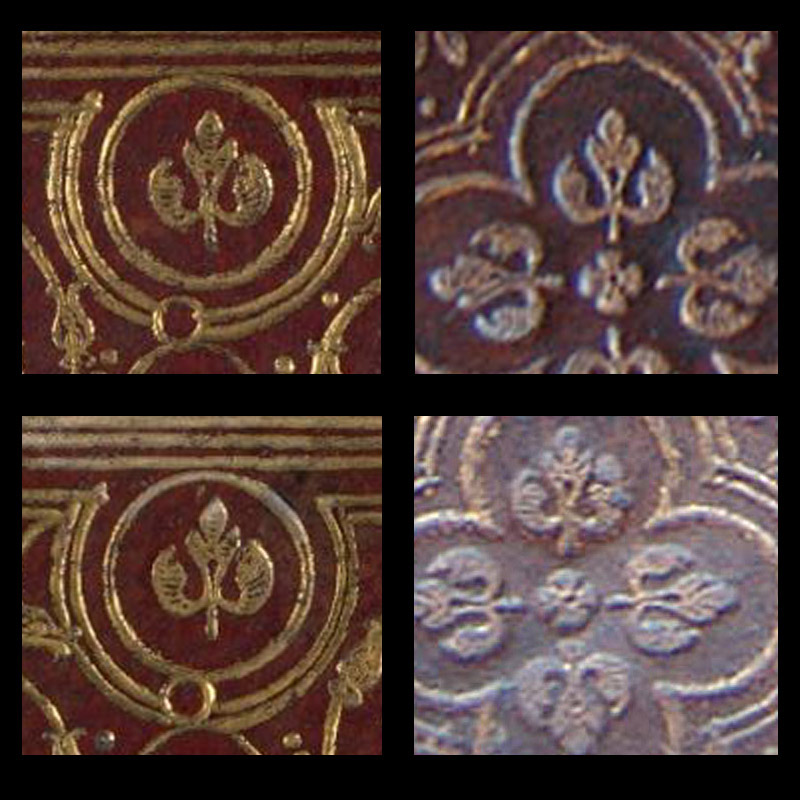
| click on this link to see the next page: c66a2 imprints |
| information about the author | return to the home page of VIRTUAL BOOKBINDING |